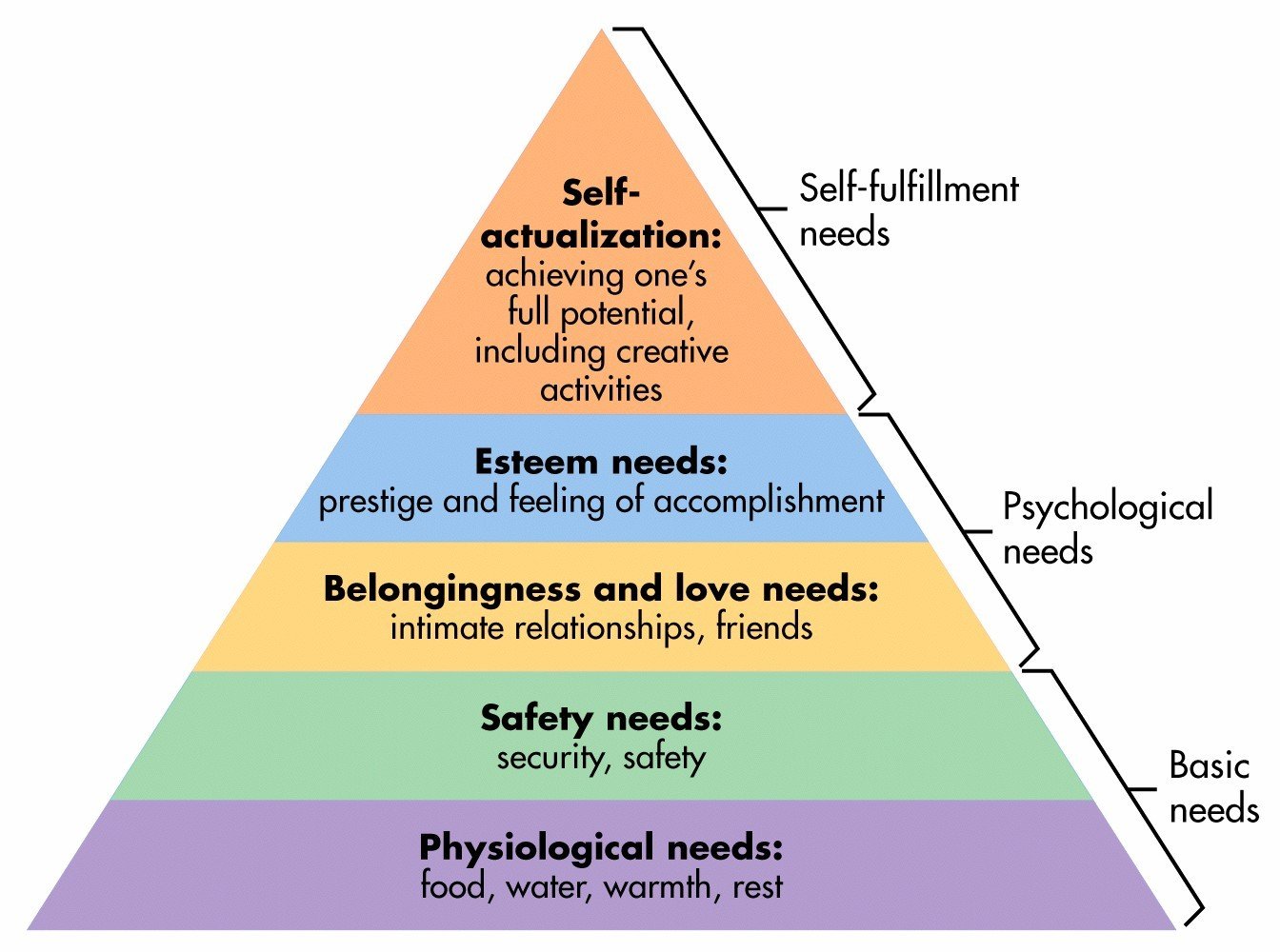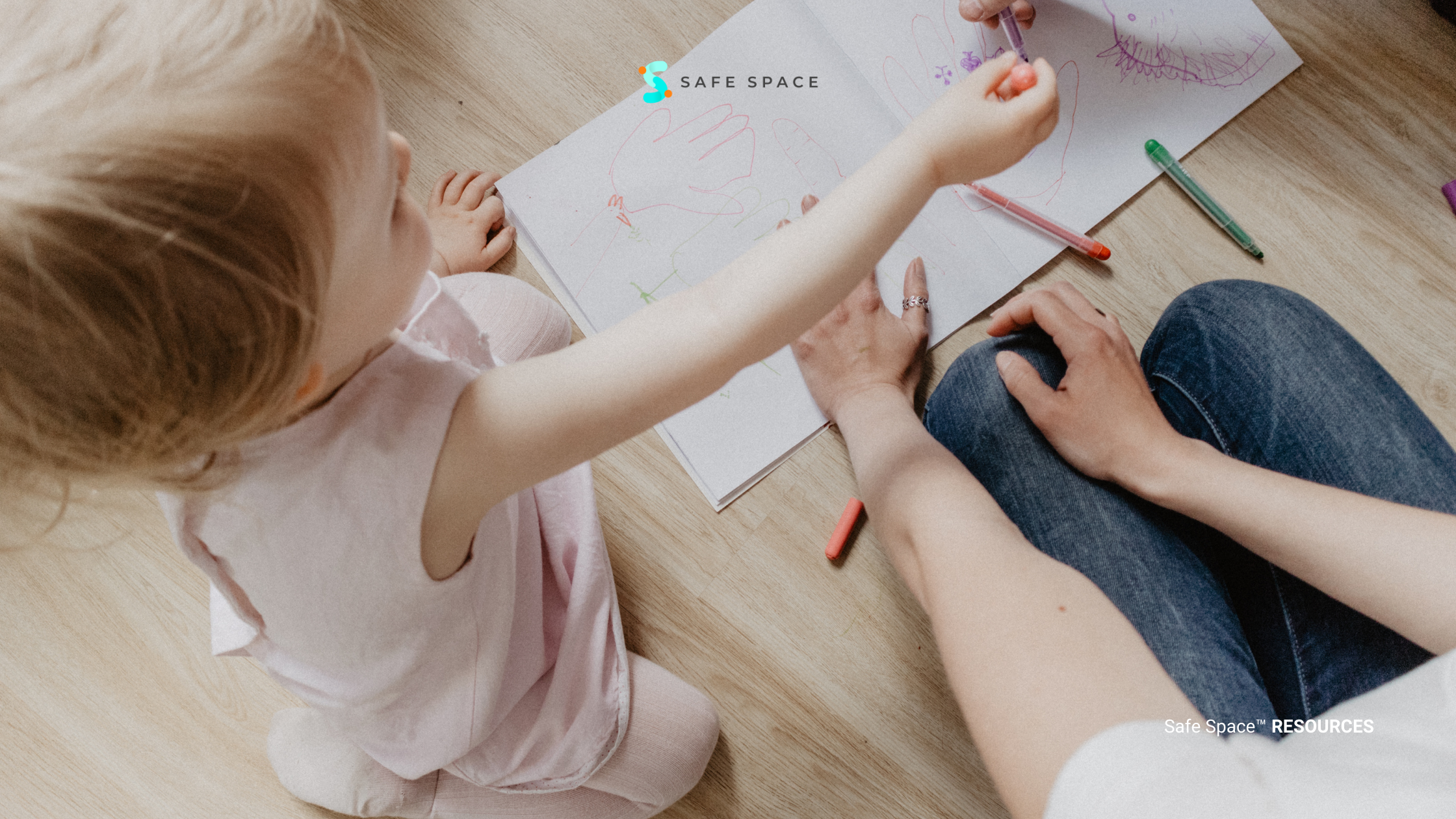EVERY parent’s vision is geared towards the betterment of their child. This, in return, helps to empower the education industry, parents, and caregivers with the knowledge and skills required for them to enable their children to integrate seamlessly into the society they live in. Unfortunately, many parents care for their children but have little understanding of providing the best support for their children. Others may want to learn more skills that will be useful in guiding their child to manage daily life challenges better or wish to have the opportunity to interact with other parents and caregivers and share similar life experiences that they go through.
Understanding Maslow’s Hierarchy of Needs
All humans have basic needs to be met in life and deal with their emotions and behaviours to adapt to society. However, as shown in Fig. 1, Abraham Maslow (1908-1970) theorised that a specific series of needs must be met [2] before the next level of needs can influence behaviour.
Maslow’s hierarchy of needs, developed by Abraham Maslow in 1954, manages the bare necessities on different levels [1]. These children will be more competent as they go on to the higher levels. There are six levels to Maslow’s hierarchy of needs, as stated by Gorman in the Aboriginal and Islander Health Worker Journal.
The first level of the hierarchy of needs is physiological, which covers the necessities of human life. This set of needs includes food, water and shelter. Before proceeding to the next level, these needs must be met.
The second level is to fulfil the safety needs of the children. This is to ensure that they feel safe and secure in the environment that they live in with no outside threats. The safety needs are not fulfilled if these children feel like they could be potentially harmed.
At the third level of the hierarchy, children need to feel a feeling of belongingness and love. Children will want to feel belonging to other people in their environment [3]. They need to have a sense of recognition and acceptance within their group.
Children want to establish good esteem through recognition, confidence, and achievement in the fourth level. By receiving recognition from others, these children will have higher self-esteem and have more confidence in their ability to learn.
At the fifth level, self-actualisation becomes important when children look for ways to fulfil their potential in learning and seek fulfilment in their learning. They will strive for specific learning goals at this level and seek to achieve them. For example, high school students would study hard for their examinations to achieve the best possible grades and be accepted into higher education at the tertiary level.
Children are motivated through self-transcendence in the sixth and final hierarchy level, which can only be reached if all previous levels have been met. At this level of self-fulfilment, they have accomplished most of their personal goals and are now inspired to better the lives of those around them [2]. Through this, they can develop a better sense of understanding and work on their own experiences. For example, they could help their friends in an area they are good at. In other words, a child must be encouraged and inspired to learn. When all levels of needs have been fulfilled, they are at their full potential for learning [1].
Another example would be that of a hungry child who is in school. The child might not function and be successful in the classroom when he fears dying from starvation. However, the child has needs that must be met to maximise their learning. The higher up the hierarchy a child is, the more levels met, the better the motivation and, therefore, the more learning the child will experience.

- METHOD
- Applying Maslow’s Hierarchy (For Parents and Caregivers)
Focusing on the parents, they can apply the hierarchy of needs in every situation, improving their relationships and keeping their days with their family meaningful and fruitful. Moreover, parents and caregivers can practice these needs while supervising their family and providing support to the cognitive ability of their children.
Level 1: Physiological
As we know, parenting brings every parent closest to their base needs. From the moment they get home their new mewling tiny human, they must begin to re-attain their primary physiological conditions, such as the need to distinguish between day and night, the need to remember that their spouse is not a stranger and the need to take a shower more than once a week and keep themselves clean.
With group learning and activities, parents can discuss their physiological needs at home. These activities also enhance human brain compatibility in education and can create a better physical environment that is inviting and warm, eventually leading to a safer environment.
Discussion: Parents can discuss the issues and challenges in attaining their basic needs through reflection and asking this set of questions: What do they need? Are they tired? Are they hungry? How much water have they had over the past 24 hours? Is it enough? What resources (family, food, items etc.) could assist them in reaching small and more significant physiological and psychological goals?
To continue discussing issues and challenges in attaining these needs, parents can ask themselves: Why can’t they get enough rest? What is hindering them from spending their time well? Who can help them? Are they financially stable? Where can they get help?

Level 2: Safety
Protecting themselves from the minefield of tending to their young is a priority. For example, they need to get enough sleep to be coherent enough to ensure safety in their house for themselves and their loved ones. It is essential for them to feel stability, safety, security, and freedom from fear.
With group learning and activities, parents can discuss their home safety. Looking at possible triggers and the attitude of other parents is sometimes enough to have a personal affirmation that creates feelings of safety and security? But, right now, at this very moment, are they safe? They are breathing, they are aware, they are awake. But are they feeling well?
Worry dropbox: As parents enter their homes, they would ‘drop’ a written concern in a box located by the entry of their homes. Research has pointed out that writing our problems gives us working memory and reduces our anxiety. Working memory (WM) is a fundamental cognitive process, often conceived as a limited capacity system [4]. The central executive function of WM [6] is responsible for the controlled processing and attention [5] needed for higher-order processes such as comprehension, reasoning, planning, and problem-solving [6]. These measures of controlled processing often called WM capacity tests, require the simultaneous storage and processing of information.
Pin-ups: We all need to feel validated, but we regularly lose sight of our strengths and talents as humans. This is because the human brain is created with a negative bias. Through these activities (pin-ups), parents would focus on the positives instead of faults and mistakes. They can have this pin-up on their fridge or create a wall specially designed for this.
Discussion: To adapt to changes and requirements, parents can create experiences together. Attend talks that promote service and safety, for example, in their children’s schools, police officers, community services, former parents who have risen above difficult situations, etc.

Level 3: Love/Belonging
Isn’t this exactly why parents had children in the first place? To have a sense of belonging and love. It is undoubtedly a great benefit. Increasing the family size certainly does increase the potential for love and belonging. But it can create a new set of needs, such as the need to do ‘more’ with their spouse other than exchanging sleepy grunts when attending to the demands of their special needs child at night.
With group learning and activities, they can also apply the five love languages by Gary Chapman to recognise their primary love language. That is, to identify their family members’ love language, improve communication with their family members, have Share-Time: Using “I” statements, removing blocks to listening, practice active listening, and become a better listener.
Discussion: On dealing with high levels of stress. Parents can ask themselves: How do they handle negative situations? When these situations occur, what do they typically say to themselves? What statement would encourage them? What are three negative emotions they felt most often? What are three positive emotions they felt often or sometimes? Celebrations: Parents can create memorable and celebratory days within their family (birthday, anniversary, achievement etc.)
Level 4: Esteem
As parents, they might often think they have their lives pretty well figured out. They’re living large, and they are wired. Then their little ones enter their world, becoming relatively small and unplugged at times. Here is what they need to grow a bit and re-plug themselves in to see their achievements, recognition, and respect for mastery and self-esteem. For example, they need to buy new clothes to replace their stained and worn-out knees, seek good chiropractic work to repair the twisted and bent muscles in their backs and know that they are doing good. To feel capable and successful, they must create a home environment that lends itself to this type of mastery.
With group learning and activities, parents can master small goals. Discussion: On small goals that they want to master: Work completions. Dialogues about frustrations. Respect and compassion for others. Contribute ideas and suggestions to a conversation and create better solutions at home: self-reflections about their day and interactions.
Questions to ask themselves: What statement would encourage them? Who are their heroes? What character traits do they admire that make them their heroes? How would they know that they are on the right track? What are their strengths? What are their challenges? How will they focus on these strengths, knowing that their thoughts and feelings drive all their words and actions?
Level 5 and Level 6: Self-Actualisation and Self-Fulfilment
Human beings are driven to get to this level. It is believed that parents progress slower at this level because of the attribution and credit they hold instead of the needs. It seems that this level is reached once parenting has stopped, and usually, this happens when their children are grown-up and out of their homes.
Abraham Maslow believed that self-actualisation could be measured through the concept of peak experiences [7]. This occurs when human experiences the world entirely for what it is, and there are extreme happiness and amazement. However, is it crucial to know that self-actualisation is an ongoing process of becoming instead of a perfect state one reaches of a ‘happy ever after’ [8]?
With group learning and activities, parents can use technology to support better living, learning, applying, and sharing new information.
Discussion: On using basic technology applications and knowing safe social networking. They will also be able to use technology to be resourceful parents and caregivers and contribute their knowledge and real-life experiences to other families and communities to better other children’s integration into society. In addition, parents can continue to encourage each other by providing essential cognitive development support.
RESULTS
In contradiction, Maslow recognised that not all human personalities followed his proposed hierarchy. While various personalities might be linked to motivational needs, one of the most often cited is that of introversion and extroversion. For example, introvert parents at the level of others/relatedness might be more concerned with their perceptions of being included in a group, thinking about whether they are accepted, while an extrovert at that same level would pay more attention to how others value their friendship/membership. There is still much work to be done in this area before relying on a theory entirely. However, this research information can be critical to parents, caregivers, educators, and others concerned about helping their children develop and use human potential. It provides an outline of some salient points that need to be addressed if humans meet the levels of character and competencies that are essential for them to be successful in the information/conceptual age [9], [10].
With parents continuing to apply the hierarchy of needs, it allows them to explore and be role models. This includes evaluating their family situation and analysing information outside of their own basic needs, and using these needs to care for and serve others. This will allow parents to improve their cognitive ability, discover their problems, and be better problem-solver. They will also be pushed to be better self-assessors and self-reflector. Parents will see and understand how their actions, thoughts, and feelings affect all lives and learn to cultivate the learning concept and build on their networking. Psychologist Abraham Maslow stated that human motivation is based on people seeking fulfilment and change through personal growth [3], [11]. People who have achieved self-actualisation are those who are fulfilled and have done all they are capable of. The development of self-actualisation [7] refers to the need for human personal growth and to discover themselves. For Maslow, a person is always ‘becoming’ and does not remain stagnant. In self-actualisation, a person finds significant meaning in life.
With this, parents can continue to write about their journey, experiences, and hope as a parent or caregivers. Questions to ask themselves: What is their purpose in life? What are the challenges in reaching their purpose and the lives of others? What can they share with the other parents of their children? What are three essential tips for parents to be shared? Which areas do parents want to focus on to help make a difference in society? How can parents achieve this goal?
Parents can initiate post discussions on sourcing, learning, applying, and sharing new information on social networks to invite more parents to join their group, with frequent gatherings and sharing sessions, as well as plans for more intensive topics to discuss. This can help to provide a sense of belonging and contribute to society.
Summary
With these needs of how humans are motivated to develop and learn, without the first level of the hierarchy met, a child cannot move on to the next level. Fulfilling each group will allow these children to have the ability and motivation to learn. Each of them can move up the hierarchy with proper support. Maslow described the highest level, namely, the tendency for parents to become actualised in what they are potential. Of course, the specific form that this hierarchy of needs will take will vary significantly from person to person and from parent to parent. One individual may take the state of the desire to be an ideal mother (parent); in another, it may be expressed athletically, while in yet another, it may be expressed in painted pictures or inventions [3].

REFERENCES
[1] McLeod, S. A. (2007). Maslow’s Hierarchy of Needs. Retrieved from http://www.simplypsychology.org/maslow.html.
[2] Gorman, D. (2010). Maslow’s hierarchy and social and emotional wellbeing. Aboriginal & Islander Health Worker Journal, 34 (1), 27-29.
[3] Maslow, A. H. (1943). A Theory of Human Motivation. Psychological Review, 50.
[4] Pennington, B. F. (1994). The working memory function of the prefrontal cortices. In M. M. Haith, J. B. Benson, R. J. Robert, Jr., & B.
F. Pennington (Eds), The development of future-oriented processes (pp.243-289). Chicago, IL: University of Chicago Press.
[5] Engle, R. W., Tuholski, S. W., Laughlin, J. E., & Conway, R. A. (1999). Working memory, short-term memory, and general fluid intelligence: A latent-variable approach. Journal of Experimental Psychology: General, 128, 309-331.
[6] Wickelgren, I. (1997, March 14). Getting a grasp on working memory. Science, 275, 1580-1582.
[7] Maslow, A. H. (1962). Towards a psychology of being. Princeton: D. Van Nostrand Company.
[8] Hoffman, E. (1988). The right to be human: A biography of Abraham Maslow. Jeremy P. Tarcher, Inc.
[9] Hutt, W. (2007). Success in the Conceptual Age: Another paradigm shift. Paper delivered at the 32nd Annual Meeting of the Georgia Educational Research Association, Savannah, GA, October 26. Retrieved December 2007, from http://chiron.valdosta.edu/whuitt/papers/conceptual_age_s.doc.
[10] Huitt, W. (2006, April 26). Becoming a Brilliant Star: A framework for discussing formative holistic education. Paper presented at the International Networking for Educational Transformation (iNet) Conference, Augusta, GA. Retrieved May 2006, from http://www.edpsycinteractive.org/brilstar/brilstar.html.
[11] Maslow, A. H. (1954). Motivation and personality. New York: Harper and Row.
About The Author
Fadzilah Abdul Rahman started her Counselling career in 2007 as a Family Life Educator in Singapore. Following her career switch in 2014, she attained a Master of Arts in Contemporary Therapeutic Counselling from the University of Hertfordshire in 2015. She has since worked with numerous students, adults, families, and couples in dealing with issues pertaining to their relationship, children, family and self-development. She enjoys her career and wishes to expand her experience, knowledge and skills further. She is a certified Registered Counsellor with SAC Singapore, Triple P Positive Parenting Programme, Signpost Programme, The Gottman Clinical and DISC Profiling.



